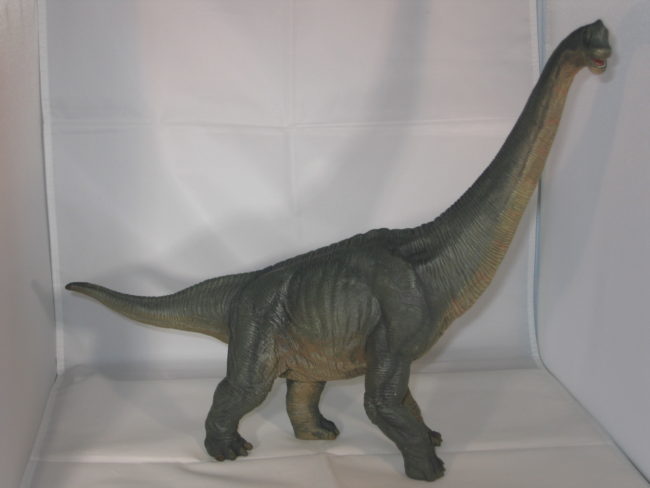Humboldt Museum’s Brachiosaurus gets a Face Lift
The giant Brachiosaurus skeleton on display at the Humboldt Museum in Berlin has been given a bit of a face lift and a general spruce up as part of a museum investment programme.
Over the last two years the Museum has been going through a period of buildings work and restoration thanks to European Union and state funding. The museum, more appropriately titled the museum of Natural History – Berlin (but called the Humboldt museum as it is actually still owned by the city’s Humboldt University), has one of the most important collections of animal specimens and fossils in the world. The dinosaurs remain the centre piece of the museum displays and the fully mounted Brachiosaurus skeleton which was first erected in 1937 takes pride of place in the whole collection.
One of the biggest of all dinosaurs, Brachiosaurus bones were first discovered in the Grand River Valley of Colorado, USA in 1900. Although the massive skeleton was incomplete it was clear that this was a new type of dinosaur. Brachiosaurus was described and named by the eminent palaeontologist Elmer Riggs in 1903. The race was on to find more remains of this enormous animal and it was the German palaeontologist Werner Janensch who found many specimens in his expeditions to Tanzania between 1909 and 1912. The Brachiosaurus in the museum was made up from brachiosaur bones collected by Werner during this period.
A Replica of a Brachiosaurus (Papo Brachiosaurus Dinosaur Model)
Picture credit: Everything Dinosaur
It is claimed to be the tallest mounted dinosaur skeleton in the world. As part of the refurbishment, the Brachiosaurus has had all the armature framework that supported the extremely heavy fossils replaced with a new high tech system that permits individual bones to be removed for study if required.
The Brachiosaurus has also been re-positioned, the tail has been lifted clear of the ground and the front legs (which always bowed out at a funny angle) have been set much more directly under the body.
This reconstruction reflects the latest research on sauropod posture. Ironically, this massive fossil has got even more impressive as a result of the make over. The skeleton is still 22 metres long but now stands over a metre taller. It used to be about 11.7 metres high, but the repositioned legs give it a height of just under 13 metres. It looks like it is going to burst through the glass panelled roof in the central hall.
The Humboldt museum will continue the restoration programme eventually re-building the damaged East Wing (bombed during World War II – an American raid in February 1945). It is hoped the refurbishment will be completed by 2009. In the meantime, a new exhibition has just opened under the theme “Evolution in Action”. A fitting title when you consider that their 70 year old resident Brachiosaurus has just been set into a new pose, based on our evolving ideas on how these amazing creatures roamed the Earth.
Brachiosaurids (and their close relatives the camarasaurids) remain one of our particular dinosaur favourites. These animals have gone through an incredible journey, once having been seen as swamp dwelling, bottom feeding giants barely capable of moving their great bodies around on land. Scientists now see them as rather more graceful animals grazing on the tops of conifers and araucarias.
Scale models of these giants are available, we have worked on a small Brachiosaurus model for the Dinosaur Collection series. This animal is not to scale, thankfully as we could not afford to mould such a big model. We leave the bigger models to the other manufacturers such as the Museum Line series of Germany.
You can compare brachiosaurs and Brachiosaurus dinosaur models by clicking the link below:
Dinosaur Models: Dinosaur Models and Toys.







actually it’s a Giraffatitan not Brachiosaurus, as Brachiosaurus wasn’t discovered in Africa